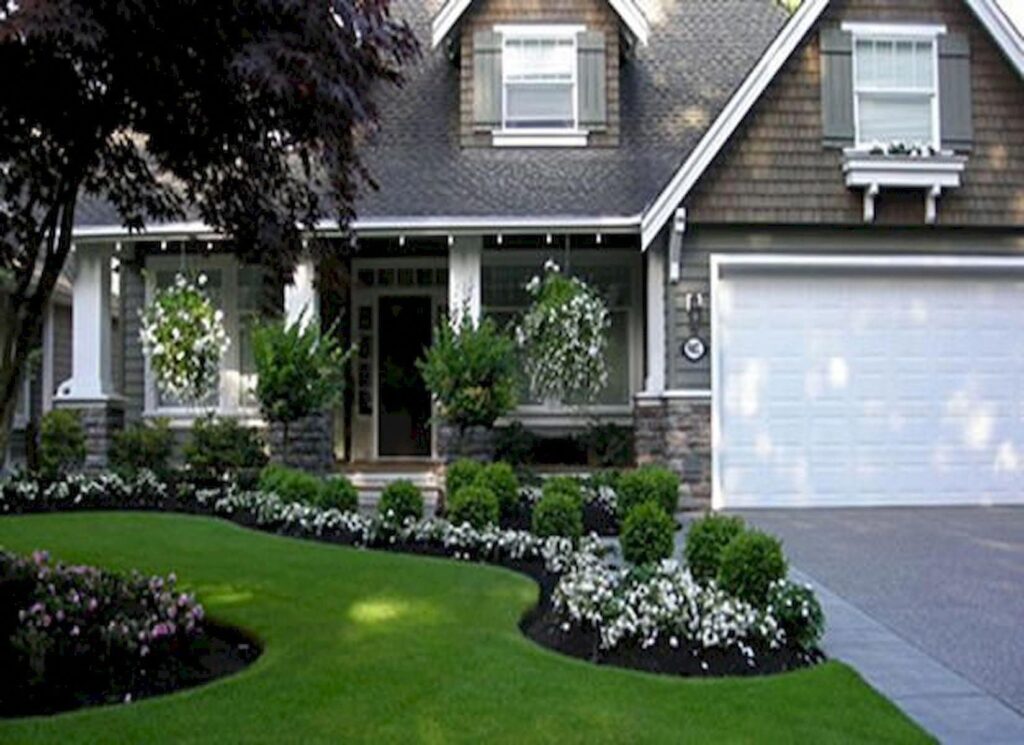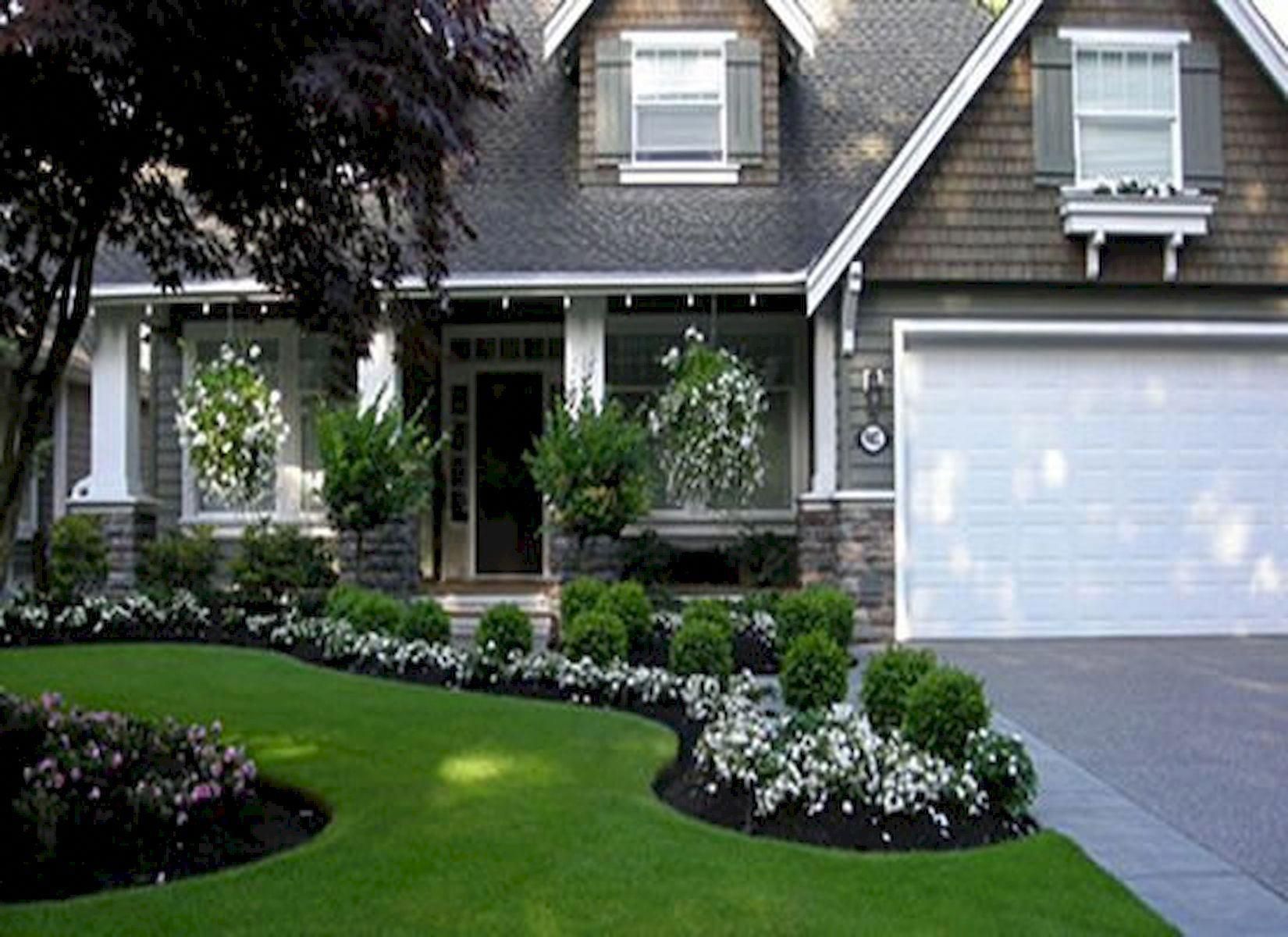
Elevate Your Curb Appeal: Stunning Front Yard Landscapes for Every Home
Your front yard is the first impression your home makes. It’s more than just a patch of grass; it’s an opportunity to showcase your style, enhance your property value, and create a welcoming space. Thoughtfully designed front yard landscapes can transform an ordinary house into an extraordinary home. This article explores various front yard landscapes ideas, offering inspiration and practical tips to help you create a beautiful and functional outdoor space.
Understanding the Importance of Front Yard Landscapes
Front yard landscapes play a vital role in a home’s overall appeal. A well-maintained and aesthetically pleasing front yard landscape can significantly boost curb appeal, which is crucial for both homeowners and potential buyers. Beyond aesthetics, a thoughtfully designed front yard landscape can also contribute to environmental sustainability by incorporating native plants, reducing water consumption, and providing habitats for local wildlife. Furthermore, it can create a sense of community by fostering a welcoming atmosphere for neighbors and visitors.
Enhancing Curb Appeal
Curb appeal is the first impression your home makes, and front yard landscapes are a crucial component. A well-designed front yard landscape can increase property value and attract potential buyers. Simple improvements like mowing the lawn, trimming hedges, and adding colorful flowerbeds can make a significant difference. More elaborate front yard landscapes might include features like walkways, patios, and water features, further enhancing the overall appeal of the property.
Sustainability and Environmental Benefits
Sustainable front yard landscapes are becoming increasingly popular as homeowners seek to reduce their environmental impact. Incorporating native plants, using drought-tolerant landscaping techniques, and minimizing the use of pesticides and fertilizers can create a beautiful and eco-friendly front yard landscape. These practices not only benefit the environment but can also save homeowners money on water bills and maintenance costs.
Creating a Welcoming Atmosphere
A well-designed front yard landscape can create a welcoming and inviting atmosphere for guests and neighbors. A well-maintained lawn, colorful flowers, and a clear pathway can make visitors feel welcome. Adding features like a porch swing or a small seating area can further enhance the welcoming atmosphere of your front yard landscape.
Front Yard Landscape Design Ideas
There are countless ways to design a front yard landscape, and the best approach will depend on your personal preferences, the style of your home, and the local climate. Here are some popular front yard landscape design ideas to inspire you:
Traditional Landscapes
Traditional front yard landscapes typically feature a symmetrical layout, manicured lawns, and formal plantings. Common elements include neatly trimmed hedges, symmetrical flowerbeds, and a well-defined walkway leading to the front door. These landscapes often incorporate classic elements like roses, boxwoods, and hydrangeas. The focus is on creating a sense of order and elegance.
Modern Landscapes
Modern front yard landscapes often feature clean lines, geometric shapes, and minimalist plantings. These landscapes may incorporate elements like ornamental grasses, succulents, and drought-tolerant plants. The focus is on creating a sleek and contemporary look that complements the architecture of the home. Hardscaping elements like concrete pavers and metal accents are often used to add visual interest.
Cottage Gardens
Cottage gardens are characterized by their informal and romantic style. These front yard landscapes typically feature a mix of colorful flowers, herbs, and vegetables. The focus is on creating a relaxed and inviting atmosphere. Common elements include climbing roses, lavender, and other fragrant plants. Cottage gardens often have a slightly overgrown and whimsical appearance.
Xeriscaping
Xeriscaping is a landscaping technique that focuses on using drought-tolerant plants and water-wise irrigation methods. This type of front yard landscape is ideal for regions with limited water resources. Xeriscapes often feature gravel mulches, native plants, and succulents. The focus is on creating a low-maintenance and sustainable landscape that conserves water. Many beautiful and colorful plants thrive in xeriscapes, defying the misconception that drought-tolerant landscapes are dull.
Rock Gardens
Rock gardens are ideal for showcasing interesting rock formations and alpine plants. These front yard landscapes often feature a variety of rocks, stones, and gravel, along with drought-tolerant plants that thrive in rocky conditions. Rock gardens can be designed to mimic natural landscapes, creating a unique and visually appealing front yard landscape.
Planning Your Front Yard Landscape
Before you start digging, it’s important to plan your front yard landscape carefully. Consider your budget, the style of your home, the local climate, and your personal preferences. Here are some steps to help you plan your front yard landscape:
Assess Your Existing Landscape
Take a close look at your existing front yard landscape. Identify any existing features that you want to keep, such as trees, shrubs, or walkways. Note the sun exposure, soil type, and drainage patterns. This information will help you choose the right plants and design elements for your front yard landscape.
Define Your Goals
What do you want to achieve with your front yard landscape? Do you want to increase curb appeal, create a welcoming atmosphere, or reduce your environmental impact? Defining your goals will help you focus your design efforts and make informed decisions about plant selection and layout. Do you want a low-maintenance landscape, or are you willing to spend time on gardening?
Create a Design Plan
Once you have assessed your existing landscape and defined your goals, it’s time to create a design plan. You can sketch out your ideas on paper, use online design tools, or hire a landscape designer to help you create a professional plan. Be sure to consider the scale of your plants and the overall layout of your front yard landscape.
Consider Your Budget
Front yard landscapes can range in cost from a few hundred dollars to several thousand dollars, depending on the scope of the project. Before you start, set a budget and stick to it. Prioritize the most important elements of your design and look for ways to save money, such as buying plants at the end of the season or doing some of the work yourself.
Choosing the Right Plants
Selecting the right plants is crucial for creating a successful front yard landscape. Consider the following factors when choosing plants:
Climate and Growing Conditions
Choose plants that are well-suited to your local climate and growing conditions. Consider the amount of sunlight, rainfall, and temperature fluctuations in your area. Select plants that are hardy in your climate zone and that can tolerate the specific soil conditions in your front yard landscape.
Plant Size and Growth Rate
Consider the mature size and growth rate of the plants you choose. Avoid planting trees or shrubs that will eventually outgrow their space or block views. Choose plants that will complement the scale of your home and the overall layout of your front yard landscape.
Maintenance Requirements
Choose plants that are easy to care for and that require minimal maintenance. Consider your own gardening skills and the amount of time you are willing to spend on maintaining your front yard landscape. Select plants that are drought-tolerant, pest-resistant, and disease-resistant.
Aesthetic Appeal
Choose plants that are visually appealing and that complement the style of your home. Consider the color, texture, and shape of the plants. Select plants that will provide year-round interest and that will create a cohesive and harmonious front yard landscape.
Maintaining Your Front Yard Landscape
Once your front yard landscape is installed, it’s important to maintain it properly to ensure its long-term health and beauty. Here are some tips for maintaining your front yard landscape:
Watering
Water your plants regularly, especially during dry periods. Water deeply and infrequently to encourage deep root growth. Avoid overwatering, which can lead to root rot and other problems. Consider using a drip irrigation system or soaker hoses to deliver water directly to the roots of your plants.
Fertilizing
Fertilize your plants regularly to provide them with the nutrients they need to thrive. Use a balanced fertilizer that is formulated for your specific plants. Follow the instructions on the fertilizer label carefully. Avoid over-fertilizing, which can damage your plants.
Pruning
Prune your trees and shrubs regularly to maintain their shape and health. Remove dead, damaged, or diseased branches. Prune at the appropriate time of year for each plant species. Use sharp, clean pruning tools to avoid spreading diseases.
Weeding
Control weeds in your front yard landscape by hand-pulling them or using herbicides. Mulch around your plants to help suppress weed growth. Avoid using herbicides that can harm your plants or the environment.
Mulching
Apply a layer of mulch around your plants to help retain moisture, suppress weeds, and regulate soil temperature. Use organic mulches such as wood chips, bark, or straw. Avoid using inorganic mulches such as rocks or gravel, which can trap heat and damage your plants.
Conclusion
Creating a beautiful and functional front yard landscape can enhance your home’s curb appeal, contribute to environmental sustainability, and create a welcoming atmosphere. By carefully planning your design, choosing the right plants, and maintaining your landscape properly, you can create a front yard landscape that you will enjoy for years to come. Remember to consider the overall style of your home and the local climate when making design decisions. With a little effort and creativity, you can transform your ordinary front yard landscape into an extraordinary outdoor space. Embrace the possibilities and start planning your dream front yard landscape today!
[See also: Backyard Landscaping Ideas on a Budget]
[See also: How to Choose the Right Plants for Your Garden]

